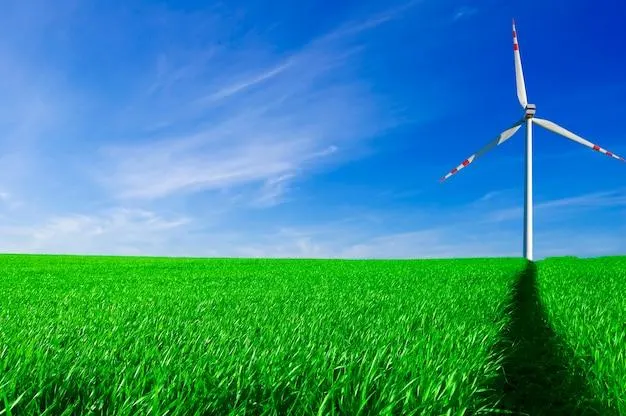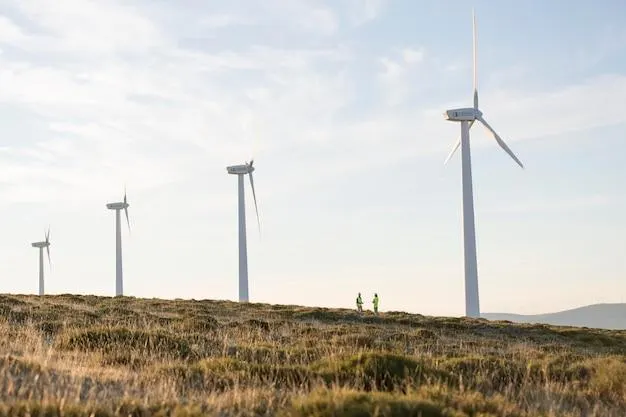Plans for renewable energy worldwide have traditionally been based on wind energy. Wind energy looks to have an even better future when people worldwide strive to combat climate action and transition to renewable energy sources. One of the most sensible approaches to utilizing a productive, sustainable energy source is wind power, which refers to harnessing wind energy to generate electricity.
However, what are the most recent developments in wind energy, and how may they impact the modern and future centralized power supply? Examining these advancements and their effects on the direction of energy is significant in this perspective. You can also visit https://www.utilitybidder.co.uk/our-services/renewable-energy-and-utilities/wind-power/ for more information on wind power and its benefits.

Understanding Wind Power: How Do Wind Turbines Work?
Wind turbines are used to capture the energy produced by wind movement, which is known as wind power. These creative wind generators are made of big blades mounted on a long pillar. The lift created by the wind blowing against the blades causes them to rotate. After that, a shaft attached to a generator converts the spinning motion into mechanical energy, which produces electricity. The fundamental idea of how wind turbines work is relatively straightforward, yet it is clever enough to capture significant quantities of kinetic energy from a moving air mass in the form of wind energy and use it to create electricity.
The Advantages of Wind Energy
When comparing the benefits of wind energy to those of other power sources, wind energy’s renewable nature stands out the most. Since wind energy does not contribute to greenhouse gas emissions like burning fossil fuels does, it is a clean method of power generation. Because of this, wind energy may be a component of the climate change solution, helping to reduce global carbon emissions into the atmosphere and preventing recognized environmental harm from older energy sources. In addition, wind energy is abundant and non-renewable, making it a perfect energy source for the future.
An enormous amount of electricity may be produced by a set of wind turbines in a location with strong winds, known as a wind farm. Since the size of the energy supply is not dependent on the importation of fossil fuels, these facilities provide energy security. Additionally, during the past ten years, several scientific advancements in wind energy technology have increased turbine efficiency and reduced production costs.

Innovations Advancing Wind Energy’s Future
Future wind energy has a lot of promise in several ways, mostly because of these advancements and technology. The following are a few of the noteworthy developments:
1. Floating Wind Turbines
Shallow water zones or territories are the typical locations for conventional WTGs. Nevertheless, floating wind turbines are groundbreaking in the relevant sphere of labor. These turbines may be installed in deep seas to exploit strong, constant winds. They are supported by steel supports that are cemented to the ocean floor. This invention increases the total capacity to generate wind energy by expanding the range of potential places for wind farms.
2. Improved Turbine Blades
Modern wind turbines have improved blade designs that increase performance and efficiency. Researchers are experimenting with new materials and stream characteristics to improve the engineering of blades, making them stronger, longer-lasting, and lighter. These developments reduce maintenance costs and equipment life cycles and improve the energy-collecting process efficiency in wind turbines.
3. Energy Storage and Smart Grids
As wind energy fluctuates, its usage in electrical grid systems is not smooth. Energy storage systems and smart grid technologies are addressing the above-mentioned issues. The smart grids’ automation and real-time data allow for the steady and effective distribution of the power produced by wind farms. To help balance the supply and demand of power, pumped hydro storage and batteries for storing wind-generated energy are also used.
4. Hybrid Renewable Energy Systems
More dependable and effective energy sources are produced when wind energy is combined with other renewable energy sources, such as solar and geothermal energy. Due to the technologies’ interdependent features and attributes, hybrid renewable energy systems offer a continuous power supply. For instance, energy is produced more consistently by solar panels, which use sunlight, and wind turbines, which use wind to generate energy.
The Role of Wind Energy in the Global Energy Transition
While the globe is now focusing on using clean energy, wind energy is expected to play a major part in reviving the global electrical supply. According to the International Energy Agency (IEA), wind energy might provide about 30% of the world’s electricity output by 2050, which could help reach the net zero emissions target.
However, wind energy is beneficial as a source of power in developing nations since it solves the issues related to central electricity supply and improves the lives of the populace both economically and qualitatively. Since most of these nations’ traditional energy production sources are non-renewable and highly polluting, such as coal and oil, reducing their reliance on such forms of electricity would help them comply with international climate change initiatives.
Furthermore, a more flexible energy system is created when wind energy is combined with other renewable sources like solar photovoltaic energy and sophisticated geothermal systems. This plan aims to achieve four objectives: it ensures a steady supply of energy while reducing the impact of energy generation on the natural environment.
Opportunities and Challenges Ahead
Despite its numerous benefits and recent advancements, wind energy has several restrictions. The low wind speed in some locations and the expensive initial cost of installing wind turbines are two shortcomings of wind farms. In addition, environmental effects affect the general usage of the land as well as the flora and wildlife.
However, particular problems may be leveraged to advance learning and technology. Scholars are considering several strategies, such as improving turbine efficiency, particularly in low wind conditions, technological innovation to reduce costs by scaling up production, and environmental factors through careful planning and design when managing wind turbines.
In particular, these issues prevent wind power from being widely used if significant technological breakthroughs are not achieved. Therefore, more funding for research and development is necessary to eliminate these obstacles and increase the efficiency of wind energy.
Conclusion
New developments in renewable energy technologies are altering the perceived value of renewable energy sources. The developments that set the stage for the future of wind energy include hybrid renewable energy systems, advanced digitization, and transitional floating wind turbines. Wind energy will help set the standard in reducing emissions, ensuring energy security, and promoting sustainable development as we look to meet the world’s electricity demand while figuring out a new energy mix with a lower carbon impact.

Jessi is the creative mind behind The Coffee Mom, a popular blog that combines parenting advice, travel tips, and a love for all things Disney. As a trusted Disney influencer and passionate storyteller, Jessi’s authentic insights and relatable content resonate with readers worldwide.
